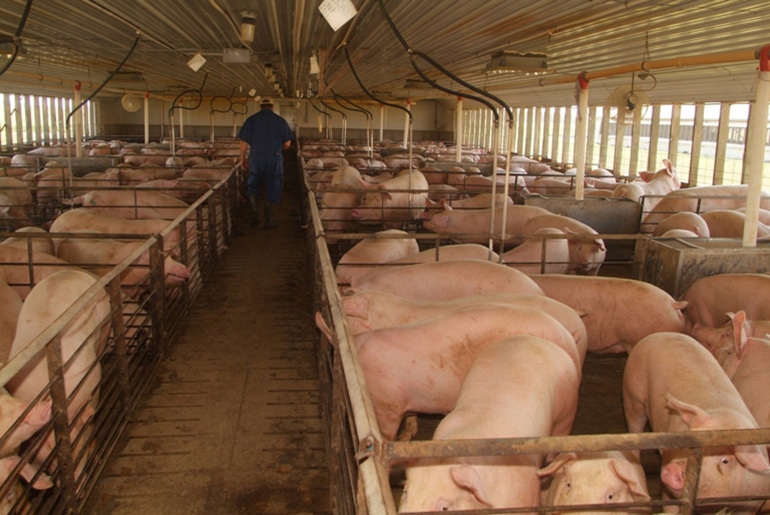April 25, 2016

One item I really like about trading livestock futures and options is the seasonality to livestock production as well as seasonality in meat demand. This gives rise to seasonal tendencies to livestock futures markets which sometimes actually work. Of course, sometimes they don’t (work) but at least one can identify a time and place in which the hog market appears to be trading in tandem with the normal seasonal tendencies. This year, so far, it appears that lean hog futures are indeed trading according to their seasonal tendencies.
The summer hog contracts established their highs in the middle of March and have established a down trend. The move lower has been very orderly. Going with the normal seasonal low tendency, one should be prepared to experience a low in hog futures sometime during May. In past years the low has developed in early May and sometimes not until late-May. Negotiating and identifying exactly when the low is being established leans heavily on experience.
We recommended selling futures this spring to hedge a portion of production. In some years we refrain from selling futures, instead utilizing options positions to establish the hedge. Again, knowing which vehicle to use taps heavily into experience. My rule of thumb, given a down trend and/or market that appears to be behaving seasonally, I’m more willing to sell futures rather than utilize options. By the way, this rule of thumb, simple as it is, can work wonders.
For example, in the porcine epidemic diarrhea virus year of 2014, as the market started out the year powerfully strong and contra-seasonally strong, we chose to use options rather than futures, preventing disastrous hedge results. As discussed last month, my clients (this year) established a host of futures hedges in late-March. Our current plan and strategy is to consider covering these hedges at some point during May. Again, seasonally, lean hog futures can be expected to establish a seasonal low or bottom sometime during May. Following this low, if it occurs, the next seasonal top timing should occur sometime during the summer months, most likely in July.
Record production projected
Another reason why I’m more willing to sell futures this year rather than use options is the fact that pork production is projected to be record large in 2016. In addition, poultry production, according to the USDA is projected record large. Finally, with beef production rising (but not record large) it must be highlighted that total meat production this year will be record large. Keep in mind that we export nearly 25% of total pork production. This is a real positive for the industry but it also represents a possible disaster in the event of a major disruption in exports, for whatever reason.
Thus far moving through the spring it appears that pork production and demand have been in relative balance. Fairly large production has been greeted with sufficient demand to prevent a declining pork carcass value. Seasonally, as hog supplies have started to decline, cash bids have been edging upward as well as cutout values. I will add a bit of frustration in the fact that excellent Chinese pork exports, thus far, have failed to ignite the cash hog market. Perhaps this will develop later during the summer months. I watch packer processing margins closely in an attempt to measure relative butcher hog supply tightness or excess. Profitable processing margins, such as currently being experienced, are not a sign of tightness in hog supply, not a sign of an impending strong price rally.
Eyeball the hog spreads
Another tool in the box is eyeballing the hog spreads. Currently, a possible bottom in the June-October bull spread has my attention. Recent action, however, indicates this spread is in fact failing, providing confirmation that the downtrend remains intact.
Lastly, I spoke to a large group of pork producers in Canada in early April. My advice to them was to attempt to boil down the fundamentals to as simple a model as possible. Simply put: record large production on the backside of record large production. Should I be hedging production, or a portion of production, if profitable prices are offered?
Be sure and question a packer contract if offered as well. Is such a contract a good deal? Packer contracts at $5 under the board do not sound like a good deal to me. My last bit of advice to my audience in Canada was to only worry about things in your business which you can control. Why worry about things not in your control?
About the Author(s)
You May Also Like





